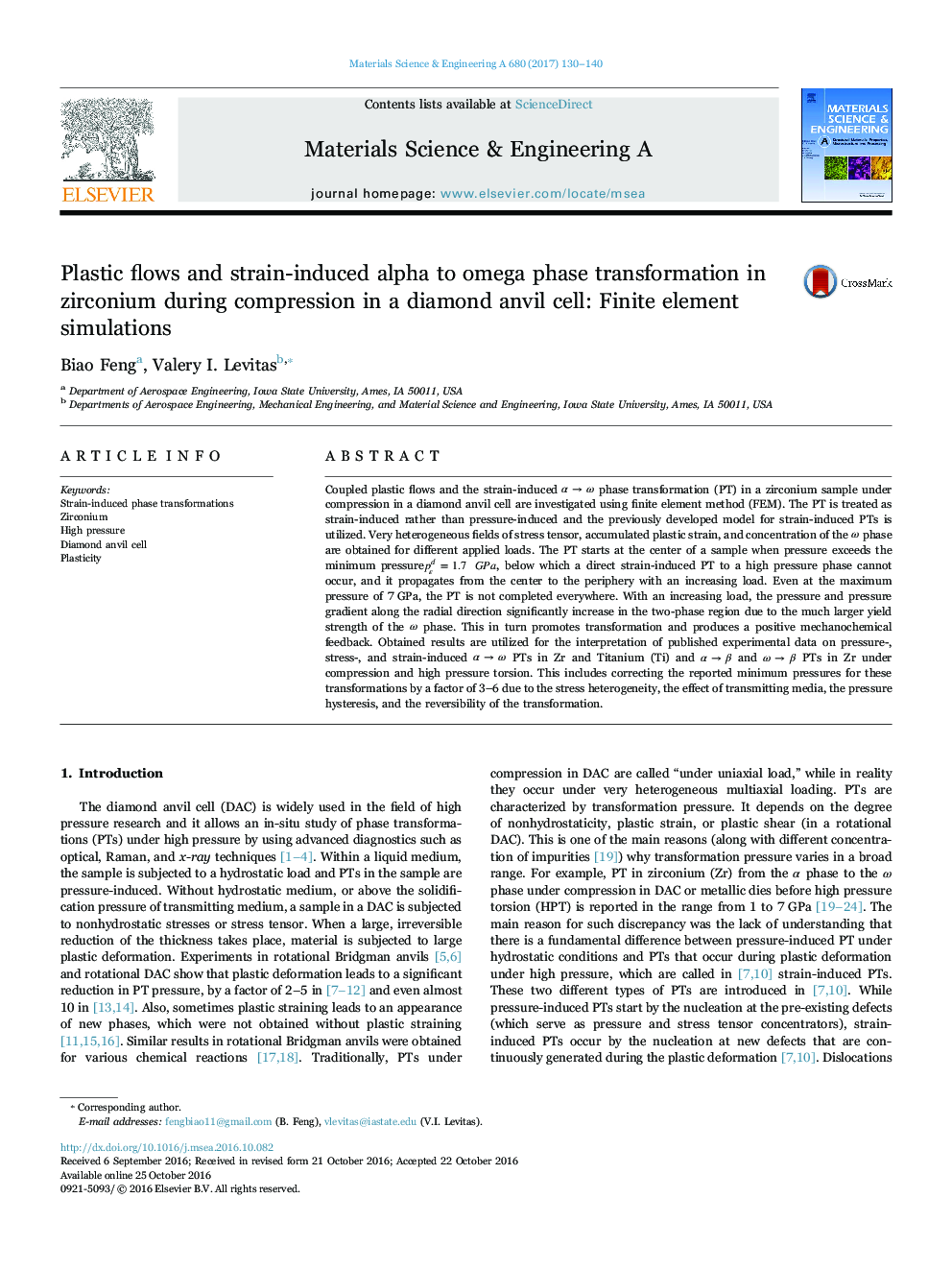| Article ID | Journal | Published Year | Pages | File Type |
|---|---|---|---|---|
| 5456753 | Materials Science and Engineering: A | 2017 | 11 Pages |
Abstract
Coupled plastic flows and the strain-induced αâÏ phase transformation (PT) in a zirconium sample under compression in a diamond anvil cell are investigated using finite element method (FEM). The PT is treated as strain-induced rather than pressure-induced and the previously developed model for strain-induced PTs is utilized. Very heterogeneous fields of stress tensor, accumulated plastic strain, and concentration of the Ï phase are obtained for different applied loads. The PT starts at the center of a sample when pressure exceeds the minimum pressurepεd=1.7GPa, below which a direct strain-induced PT to a high pressure phase cannot occur, and it propagates from the center to the periphery with an increasing load. Even at the maximum pressure of 7 GPa, the PT is not completed everywhere. With an increasing load, the pressure and pressure gradient along the radial direction significantly increase in the two-phase region due to the much larger yield strength of the Ï phase. This in turn promotes transformation and produces a positive mechanochemical feedback. Obtained results are utilized for the interpretation of published experimental data on pressure-, stress-, and strain-induced αâÏ PTs in Zr and Titanium (Ti) and αâβ and Ïâβ PTs in Zr under compression and high pressure torsion. This includes correcting the reported minimum pressures for these transformations by a factor of 3-6 due to the stress heterogeneity, the effect of transmitting media, the pressure hysteresis, and the reversibility of the transformation.
Related Topics
Physical Sciences and Engineering
Materials Science
Materials Science (General)
Authors
Biao Feng, Valery I. Levitas,
